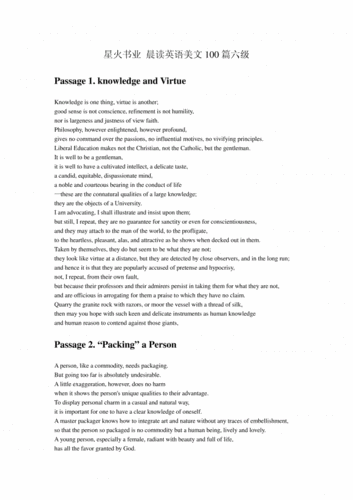英语文学导论课后答案
Exploring Meter in English Literature

Meter is a fundamental aspect of English poetry, essential for understanding rhythm, structure, and the overall impact of a poem. Let's delve into the intricacies of meter in English literature.
What is Meter?
Meter refers to the rhythmic structure of a verse, determined by the pattern of stressed and unstressed syllables within each line. It creates the musicality and cadence of a poem, contributing to its aesthetic appeal and emotional resonance.
Types of Meter
1.
Iambic Pentameter
: Perhaps the most common meter in English poetry, iambic pentameter consists of five metrical feet per line, with each foot containing an unstressed syllable followed by a stressed syllable. This pattern mirrors the natural rhythm of English speech and is often used in Shakespearean sonnets and blank verse.Example:
```
Shall I compare thee to a summer's day?
```
2.
Trochaic Meter
: In trochaic meter, the stressed syllable precedes the unstressed syllable within each metrical foot. While less common in English poetry, trochaic meter can create a distinctive and memorable rhythm.Example:
```
Tyger Tyger, burning bright,
```
3.
Anapestic Meter
: Anapestic meter features two unstressed syllables followed by a stressed syllable in each foot. It often creates a lively and flowing rhythm, suitable for comedic or lighthearted poetry.Example:
```
And the sound of a voice that is still.
```
4.
Dactylic Meter
: Dactylic meter consists of a stressed syllable followed by two unstressed syllables in each foot. This meter is less common in English poetry but can be found in some classical forms and experimental verse.Example:
```
This is the forest primeval, the murmuring pines and the hemlocks.
```
5.
Spondaic Meter
: Spondaic meter consists of two stressed syllables per foot, creating a strong and emphatic rhythm. While less common as the sole meter of a poem, spondaic feet are often used for emphasis or dramatic effect within a predominantly iambic or trochaic meter.Example:
```
Break, break, break,
```
Functions of Meter
1.
Rhythm and Musicality
: Meter provides poetry with a rhythmic structure, akin to music, enhancing its auditory appeal and memorability.2.
Emotional Impact
: The cadence of meter can evoke specific emotions or moods, ranging from solemnity to joyousness, depending on the pattern and pace.3.
Structural Integrity
: Meter establishes a framework for the organization of poetic lines, contributing to the coherence and unity of the poem as a whole.Meter in Practice
Poets often manipulate meter to achieve various effects. They may employ metrical variations, such as substitutions or truncations, to disrupt the established rhythm and create tension or emphasis. Additionally, poets may use enjambment or caesura to control the flow of the verse and play with reader expectations.
Conclusion
Meter is a vital aspect of English poetry, shaping its rhythm, structure, and emotional impact. By understanding the different types of meter and their functions, readers can deepen their appreciation of poetic craftsmanship and engage more fully with the rich tapestry of English literature.











